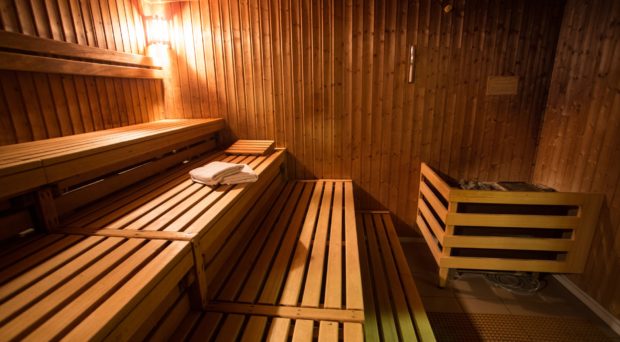
Sauna bathing is a common practice that dates back to the Middle Ages and is often used for the purposes of pleasure, wellness and relaxation. On top of that, emerging scientific evidence indicates that sauna bathing might also offer a multitude of health benefits. Past research has focused on males as during that time they were at higher risk for CVDs compared to females. But now data is being collected for women as they are also at risk of CVDs, although later in life than men.
We conducted a series of epidemiological evaluations of sauna bathing in the prospective Kuopio Ischemic Heart Disease (KIHD) study, a large population-based cohort of 1,688 middle-aged to elderly men and women living in Eastern Finland. This cohort offers a unique opportunity to study the potential benefits of sauna use because it contains detailed information on sauna bathing (including weekly frequency and duration), many other lifestyle factors, and incidence of relevant diseases over a long-term follow-up.
Sauna bathing and cardiovascular disease
In our recent paper published in BMC Medicine, we set out to evaluate the relationship between sauna bathing habits (both frequency and duration) and the risk of cardiovascular disease (CVD) mortality in the KIHD study and to investigate any differences by gender. The mean age of participants was 63 and 51% were female. In general, the duration of stay in the sauna room depends on the comfort and temperature of the sauna, but most people will stay in a sauna room for around 5 to 20 minutes.
We could show in our analysis that these cardiovascular benefits equally apply to men and women, which was unknown to this date.
Over a median follow-up time of 15 years, a total of 181 fatal cardiovascular events occurred. Our analysis showed that the incidence of fatal CVD was lower in people that visited the sauna more frequently: compared to people that went to the sauna once per week. The relative risk for fatal CVD in people bathing in the sauna 4-7 times per week was reduced by 66%. A similar reduction in risk was observed in people that reported a total time spent in the sauna of 45 minutes or more per week. Importantly, we could show that these cardiovascular benefits equally apply to men and women, which was unknown to this date.
Because our analysis is based on a representative sample of middle-aged to elderly men and women, results should be widely generalizable. Nevertheless, replication of these findings in other European and non-European countries would be of interest to study the impacts of sauna bathing in populations in which its use is not so wide-spread as in Finland. Also, further research on other types of saunas such as steam rooms and warm water therapy would be of interest, since our study was focused only on the Finnish sauna characterized by hot temperatures combined with low humidity.
How could saunas be beneficial?
There are several physiological mechanisms that may explain the association we observed between sauna bathing and reduced cardiovascular mortality. Our research team has previously shown that frequent sauna use is associated with lower blood pressure. In addition, beneficial effects may be mediated via improvement in endothelial function; reduction in inflammation; beneficial modulation of the autonomic nervous system; an improved cardio-metabolic risk profile; and arterial compliance with improved cardiovascular function.
Furthermore, sauna bathing improves balance in the cardiac autonomic nervous system, leading to an increase in vagal tone and a decrease in sympathetic tone, with positive modulations in the autonomic nervous system during recovery following a sauna bath. The autonomic nervous system, as measured by heart rate variability (HRV), is involved in different mechanisms of the cardiovascular system. A reduced HRV is associated with an increased risk of cardiovascular mortality. Warming up in the sauna with subsequent cooling and relaxation may have a positive effect on HRV.
Altogether, epidemiological evidence indicates that regular sauna bathing has a plethora of beneficial effects on the cardiovascular system. On top of the mechanisms we already elucidated in earlier publications, further research would be interesting to capture other sauna effects such as stress reduction and improvement in the autonomic nervous system balance and to understand the combined effects of sauna bathing and regular physical activity.
In Finland, sauna bathing is already easily accessible to the majority of the population independent of socioeconomic and educational backgrounds. We hope that it will become easily available relaxation tool and enjoyable activity for many people from various countries.
Comments